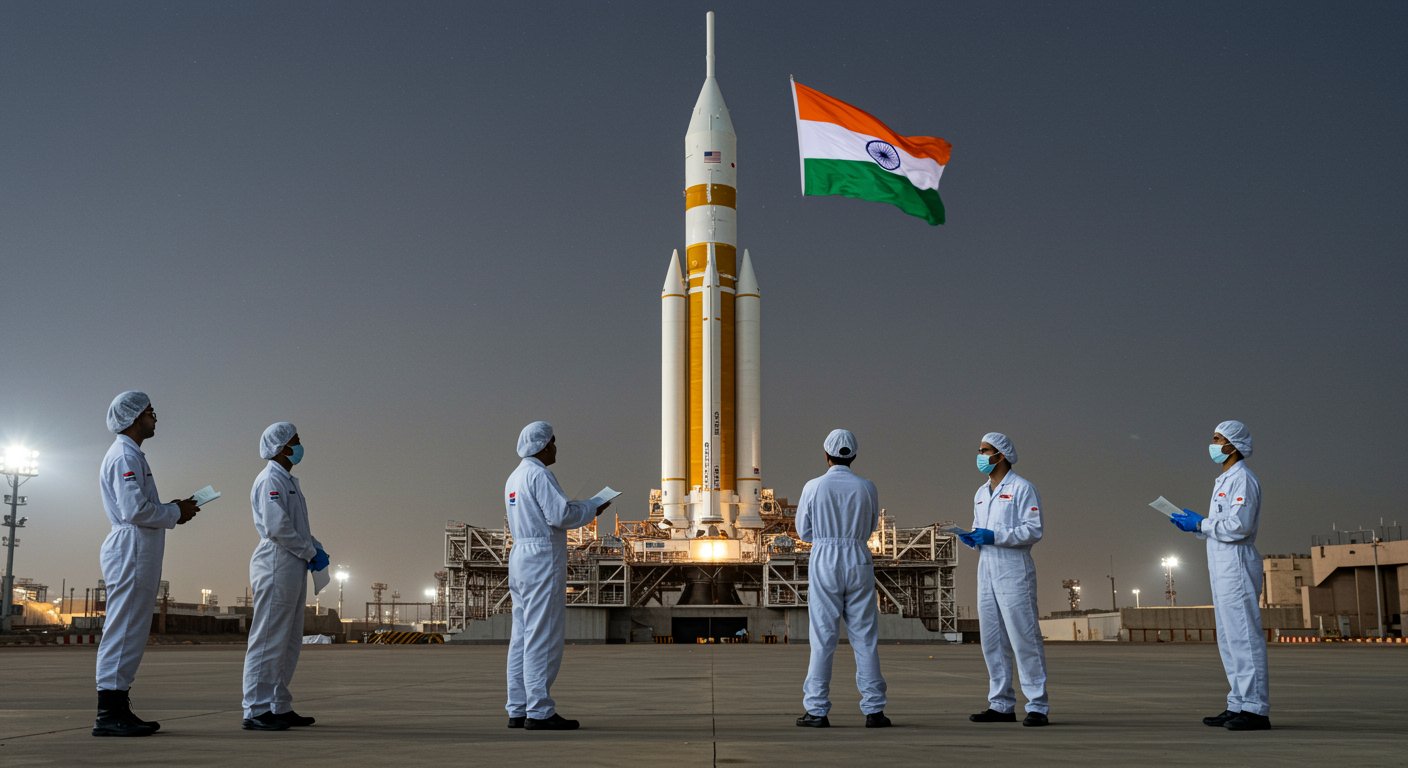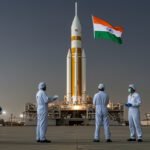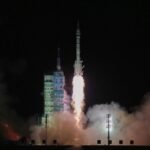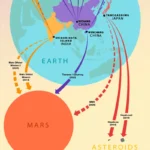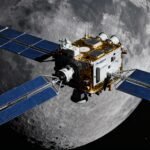When India launched its first rocket from a small church in Thumba in the 1960s, few imagined that the nation would one day prepare to send its own citizens into space. Yet here we are — standing at the cusp of history with the India human spaceflight program, known as Gaganyaan, ready to redefine the country’s space legacy.
Currently in its final testing phase, the Gaganyaan project aims to send Indian astronauts — or Vyomnauts — into orbit aboard a domestically developed spacecraft. The upcoming uncrewed G1 test flight, scheduled for December 2025, is expected to feature Vyommitra, a humanoid robot capable of speaking both English and Hindi. Vyommitra will serve as a digital pioneer, collecting vital real-time data on cabin conditions such as temperature, oxygen levels, and life-support performance — ensuring human readiness for the final crewed launch in 2027.
With this program, India is on track to become the fourth nation capable of independent human spaceflight — joining the United States, Russia, and China.
What Is Gaganyaan and Why It Matters
Gaganyaan — meaning “Skycraft” in Sanskrit — is ISRO’s first human spaceflight mission, developed under the Government of India’s “Atmanirbhar Bharat” (self-reliant India) initiative. The project’s goal is straightforward yet monumental: to demonstrate India’s capability to launch humans into low Earth orbit (LEO) and bring them safely back to Earth.
According to the Indian Space Research Organisation (ISRO), Gaganyaan involves a series of three uncrewed test flights before the crewed mission. Each stage tests critical systems such as flight dynamics, re-entry safety, and environmental control — with Vyommitra playing a key role in verifying crew safety under real flight conditions.
ISRO Chairman S. Somanath described the project as “India’s most complex mission ever — where every system must function flawlessly to protect human life.”
Gaganyaan Mission Snapshot
| Parameter | Details |
|---|---|
| Mission Name | Gaganyaan (India Human Spaceflight Program) |
| Agency | Indian Space Research Organisation (ISRO) |
| Uncrewed Test Flights | 3 (G1, G2, G3) |
| First Test Flight (G1) | December 2025 |
| Crewed Mission Target | 2027 |
| Rocket | LVM3 (Launch Vehicle Mark 3) |
| Crew Size | 2–3 Indian astronauts |
| Orbital Altitude | ~400 km |
| Duration (Crewed Flight) | 3–5 days |
| Special Payload | Vyommitra humanoid robot (for testing life-support systems) |
How Vyommitra Will Shape the Future of Space Safety
Meet Vyommitra — India’s first female humanoid astronaut. Designed by ISRO’s Inertial Systems Unit in Thiruvananthapuram, Vyommitra is a semi-autonomous robot equipped with sensors and AI-driven communication modules.
She can:
- Mimic human physiology, helping ISRO understand how space affects body temperature and breathing.
- Speak English and Hindi, making her relatable to both crew and mission control.
- Operate onboard systems, interact with the spacecraft, and respond to commands.
- Provide feedback on cabin conditions such as oxygen saturation, CO₂ levels, and temperature fluctuations.
Vyommitra’s role is critical — before sending humans, ISRO needs a synthetic passenger to validate that life-support systems can handle real-time changes in pressure, heat, and microgravity.
This approach mirrors global best practices: NASA’s “Crew Test Dummies” and Russia’s Skybot F-850 performed similar roles before crewed launches.
Challenges on the Road to Human Spaceflight
India’s human spaceflight program may sound like a natural progression, but it’s far from simple. Each phase is filled with engineering and logistical challenges that must be mastered to ensure astronaut safety.
1. Crew Safety & Escape Systems
The recent TV-D1 test flight (October 2023) demonstrated ISRO’s Crew Escape System — a safety mechanism to eject astronauts in case of rocket failure. This was a critical success, proving ISRO can protect human lives under extreme conditions.
2. Life-Support & Environmental Systems
Unlike satellite missions, human missions require closed-loop environments where oxygen, pressure, and humidity are carefully controlled. Even slight fluctuations could endanger lives. Vyommitra’s role in verifying these systems is crucial.
3. Training Indian Astronauts
Four astronauts selected for Gaganyaan underwent rigorous training in Russia before continuing at ISRO’s Human Space Flight Centre (HSFC) in Bengaluru. Their training covers survival drills, flight simulation, and physical conditioning for microgravity environments.
4. Precision Engineering & Testing
Every component — from the LVM3 rocket to the orbital module — must endure re-entry temperatures exceeding 1,500°C. The heat shield, parachutes, and splashdown systems are undergoing repeated tests to ensure 100% reliability.

India’s Space Journey in Global Context
| Country | First Crewed Flight | Notable Mission | Current Focus |
|---|---|---|---|
| USA | 1961 (Mercury-Redstone 3) | Artemis Lunar Missions | Lunar return & Mars exploration |
| Russia (USSR) | 1961 (Vostok 1) | Soyuz & ISS programs | Station operations & crewed science |
| China | 2003 (Shenzhou 5) | Tiangong Space Station | Permanent orbital presence |
| India | Expected 2027 (Gaganyaan) | Human spaceflight debut | Indigenous crewed launch capability |
With Gaganyaan, India becomes a peer in the elite league of human spacefaring nations — not just observers. This achievement also enhances India’s technological confidence and strengthens its standing in global aerospace cooperation.

The Science & Engineering Behind LVM3
The Launch Vehicle Mark-3 (LVM3), nicknamed “Bahubali” for its power, serves as the backbone of India’s human space program.
Key features include:
- Cryogenic Engine (C25) – Delivers high thrust needed for heavy payloads and stable orbits.
- Human-Rated Certification – Each component undergoes extended testing to ensure zero-failure tolerance.
- Orbital Module Design – Divided into Crew Module and Service Module, equipped with life-support, propulsion, and heat shielding systems.
During Gaganyaan’s final phase, the LVM3 will lift the crew to 400 km altitude, where they’ll orbit Earth for several days before re-entering the atmosphere for splashdown in the Bay of Bengal.
The Broader Impact: Science, Sovereignty & Inspiration
The India human spaceflight program is more than a technological milestone — it’s a symbol of national pride and scientific sovereignty.
- Scientific Advancement: The research in physiology, material science, and life-support systems contributes to both space and medical technology on Earth.
- Industrial Growth: Over 500 Indian companies are contributing components, from sensors to avionics — strengthening domestic aerospace manufacturing.
- Youth Inspiration: Like the Apollo missions inspired a generation in America, Gaganyaan is fueling dreams among young Indian scientists and engineers.
Future Roadmap: Beyond Gaganyaan
The Gaganyaan mission is just the beginning. ISRO’s future roadmap includes:
- Bharatiya Antariksha Station (2028–2035): A small, modular Indian space station for microgravity research.
- Chandrayaan & Shukrayaan Extensions: Integrating human-rated technologies into future planetary missions.
- International Collaboration: India may partner with other nations for long-duration crewed missions and joint experiments in low Earth orbit.
Conclusion
The India human spaceflight program is more than a mission — it’s a statement of vision, courage, and innovation. Through Gaganyaan, India isn’t merely joining an elite club of spacefaring nations — it’s creating its own path to the stars.
The upcoming G1 test with Vyommitra marks a turning point in human-rated engineering, and the final crewed mission will be a historic moment for all Indians.
🌌 What excites you most about India’s journey to space?
Share your thoughts in the comments, and don’t forget to subscribe for updates on India’s Gaganyaan mission, Vyommitra’s tests, and ISRO’s future interplanetary goals.
Comment on our Facebookpage :
Find more Information: ISRO Official Gaganyaan Mission Page

